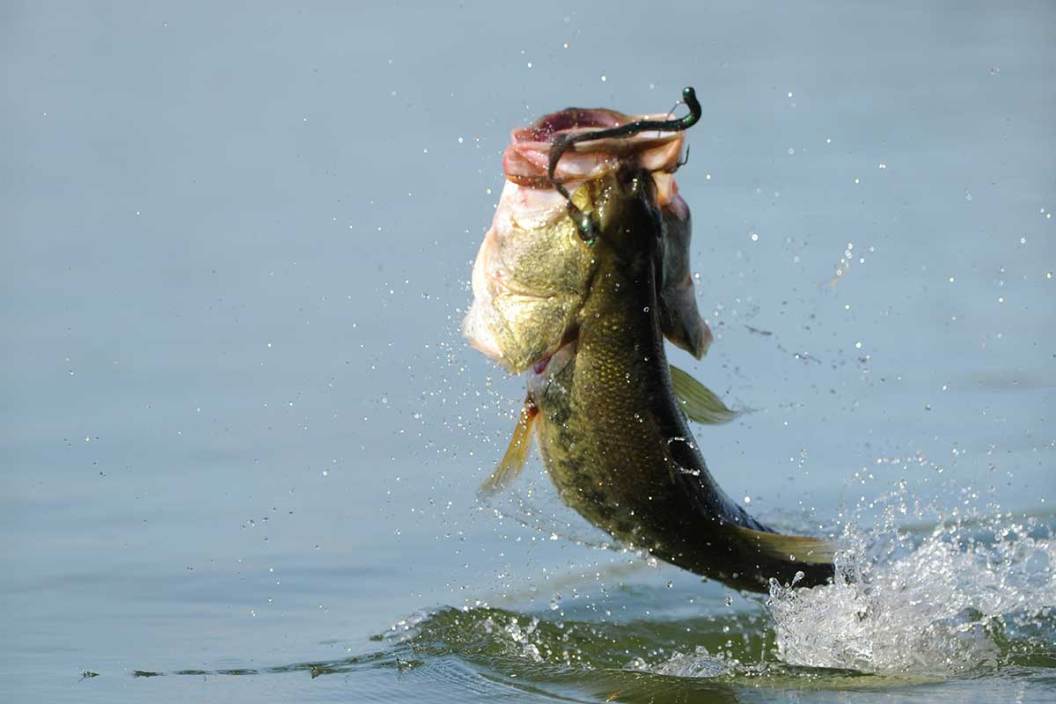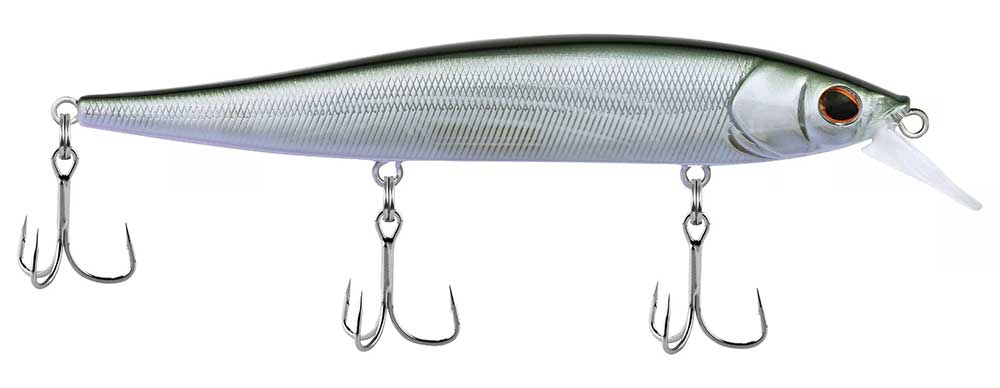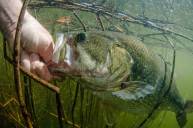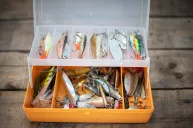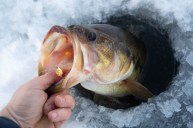It can be a daunting task to try to learn all of bass fishing's nuances and the tactics it takes to be successful. It is impossible to know everything, even with years of experience. But one thing is for sure when you are a novice bass fisherman: simplicity is key. You can get fancy and experiment later, but figure out the basics first. Spring, in particular, is a great time for new bass anglers to get out and fish. Spring spans several months, and a lot changes in terms of fishing conditions over that time. Water level, water temperature, air temperature, wind speeds, fish depths, forage sources, and fishing pressure all pose variability in the spring months. It acts as a crash course and can help you prepare you for the stagnant conditions of the summer. With the great variability in spring conditions, it is important to have a versatile arsenal of baits that can cover multiple water depths and present differently. But as a novice bass fisherman, you don't want to get caught up in figuring out hundreds of different baits and rigs. You'll hopefully stick to bass fishing the rest of your life and figure all that out as you go.
Basic Bass Bait Setups
For the novice bass fisherman, I am proposing a very basic four bait system for spring fishing. This list isn't overly complicated and includes versatile baits. All of the baits to be discussed also can be fished on a one or two rod setup, as I imagine a new fisherman's boat doesn't have 30 rods in it like Kevin VanDam's.
If you are new to bass fishing, follow along and try out this four bait setup for spring fishing.
Products featured on Wide Open Spaces are independently selected by our writers and editors. However, when you buy something through our links, we may earn a commission.
Colorado Bladed Spinnerbait
Everybody loves fishing a spinnerbait. I would go on to bet that more bass have been caught on a spinnerbait than any other. Why? Because they are easy to fish, versatile, and cheap. Most beginner bass fishermen are taught to throw a spinnerbait before anything else.
Spinnerbaits, and more specifically big, Colorado-bladed spinnerbaits, are great options for spring bass. The vibrations from the big blade help fish locate the bait in murky waters, and flash from the blade creates a big visual target in clear waters. And considering spring brings frequent rain, you could be fishing in worse water clarity and still find success with a spinnerbait.
They come in a plethora of color patterns and can be fished at multiple depths and speeds. By getting to know your body of water and understanding the forage source, you should be able to match the hatch with an appropriately colored spinnerbait.
For the sake of keeping it simple this spring, I would recommend just two color patterns. One can be a darker pattern; I use a black and blue combination. The other should be a light pattern. I like to use a bright, pure chartreuse or fire tiger color pattern.
Fish the bait slowly to start and adjust the speed as needed to cover different parts of the water column. You can swim the bait at constant speed or you can also stop and start your retrieve to create the image of dying forage.
Lipless Crankbait
Lipless crankbaits have been used for a long time but have become incredibly popular in the last decade. Known for their versatility and sheer ability to catch fish, lipless crankbaits find themselves in almost every professional's tackle box. I would recommend that you put one in yours.
Spring is a great time to break out the lipless bait, as it has some similar advantages to a Colorado-bladed spinnerbait. Many lipless crankbaits are built with interior rattles that create vibration while traveling through the water column. This works great for muddy water and clear water alike.
Lipless crankbaits, in my opinion, come in some of the best, most realistic color patterns. There are many that mimic crawdads and shad. Some bait companies also make unique color patterns that work great for clear water conditions.
For novices this spring, I would recommend the same advice that I gave with spinnerbaits: keep it simple. Two or three color patterns should suffice. I like one or two variations of crawdad patterns, most namely a red bait with black and orange marking, or a blue and dark green combination. I also like to keep a chrome colored lipless bait in my tackle box, too.
Lipless crankbaits are incredibly versatile. Change your reel speeds and rod tip positions to swim the bait at different levels of the water column. Also try different retrieve patterns to see what the fish are keying in on.
Texas Rigged Soft Plastics
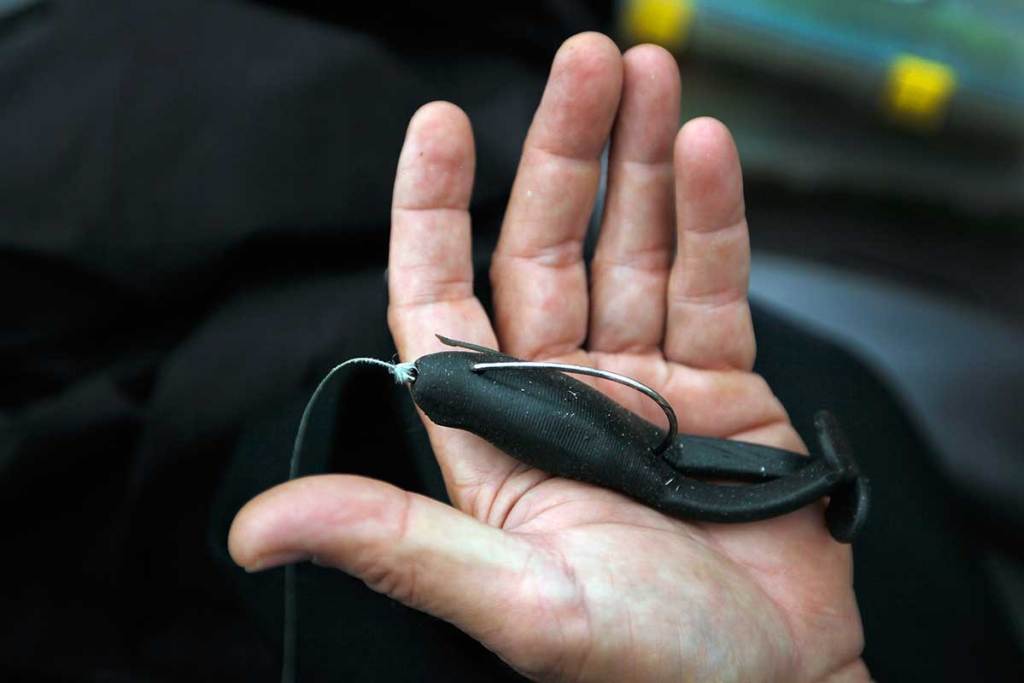
Joe Raedle/Getty
If you are looking for realism and reliability, always keep a Texas rig plastic tied on. When the fish just don't seem to be biting on anything else, it is time to slow it down and bottom bounce a creature bait.
On tough spring days with a slow bite, throwing a Texas rig can often turn things around. The slow retrieve allows this bait to sit in the target zone longer and lets bass get a better look at it. When it comes to realism, nothing compares to a quality creature bait.
As far as what to use, I've had luck on worms, tubes, lizards, frogs, and crawdad imitators. Since they come in a variety of colors and molds, matching the hatch with a soft plastic is easy. But sometimes you want to give the fish a presentation that it is not used to. This helps invoke the fish's curiosity, which usually translates to strikes.
In the spirit of keeping it simple, start out with a couple packs of worms and tubes. A wide gap, offset worm hook can hold either, and you can change the plastic without having to tie a new hook. A 1/8- to 1/4-ounce bullet weight will work for most waters, but it might need to be increased for deeper spots.
I like Texas rigged baits for beginner finesse fisherman because they are simple rigs with only a few extra pieces. All you need to do is cast the bait and bounce it off the bottom on the way back to the boat. Don't be afraid to take it slow. Reel up your slack after a bounce and leave it in contact with the bottom for a while. I know 5-10 seconds might feel awkward at first, but sometimes the extra pause will invoke a strike.
Jerkbait
Now we have arrived to one of my favorite all time spring bass lures, the jerkbait. Most anglers will tell you that jerkbaits are flat out fish catchers. They work in clear water, murky water, cold water, and warm water. They are very versatile and don't take a ton of expertise to get the hang of.
Once again, jerkbaits are great to throw on slow bite days. The dying action of the bait entices bass to strike. Jerkbaits are separated into a couple categories, floating or suspending. Having one or two of each will allow you to cover different levels in the water column, just in case the fish haven't moved to shallow water yet.
Jerkbaits come in a variety of colors but it seems like the most commonly used are white, silver, and a sexy shad pattern. Jerkbaits are meant to mimic dying baitfish and by choosing one of the colors I just mentioned, you are creating that visual for a bass to lock in on.
I like to keep a couple floating jerkbaits and a couple suspending jerkbaits in my tackle box in the spring, and I only run two color patterns, a solid white/cream or a silver side with a black back. I've found both patterns will catch fish.
Remember to keep it simple this spring if you are a novice bass fisherman. If you really want to put piles of bass in the boat, learn to fish these four baits efficiently and you might find that they are all you need.
